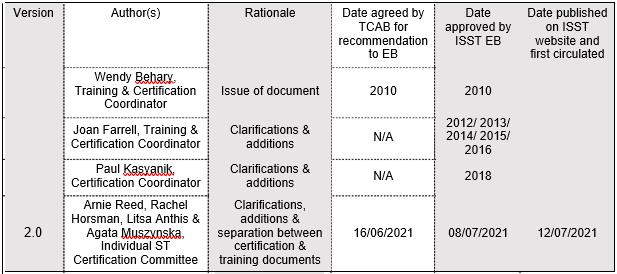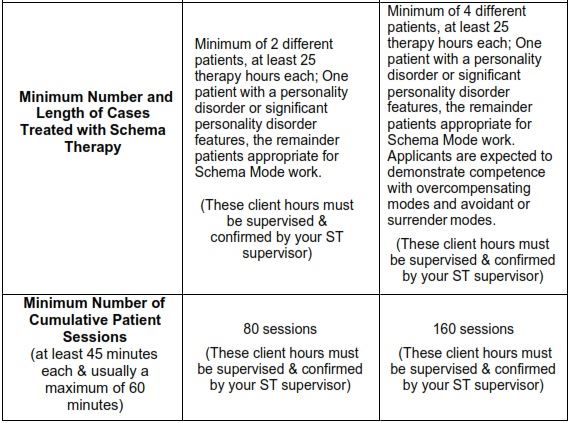2021 ISST REQUIREMENTS FOR CERTIFICATION AS A SCHEMA THERAPIST (INDIVIDUAL) V. 2.0
1. Qualifications required to begin Individual Schema Therapy (ST-I) Certification TRAINING, and also for then applying for ST-I CERTIFICATION for those beginning training on, or after 1st of September 2021.
b. If you belong to another group that is licensed or certified to practice psychotherapy in your country, please include this information along with your academic qualifications to be considered for certification training when you submit your application. Some countries have described in detail how the ISST qualifications need to be applied for their country. The UK is one example of this and for exception requests these standards are used.
2021 ISST Minimum Certification Training Requirements Chart 1.
Important Explanations & Notes 2. Explanation of the 2 Certification Levels
3. Approved Certification Training
4. Supervision Requirements
5. Content of Supervision
6. Converting Group Supervision Hours to Individual Supervision Hours
7. Patient Session Recording Ratings by Independent Rater(s)
8. Time Limits for Completing Accreditation
9. Applying for Certification
10. After Becoming a Certified Schema Therapist
|




